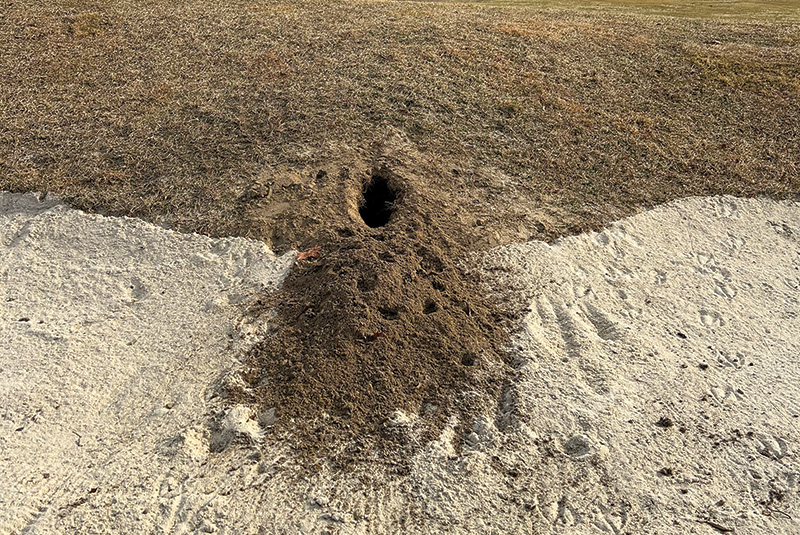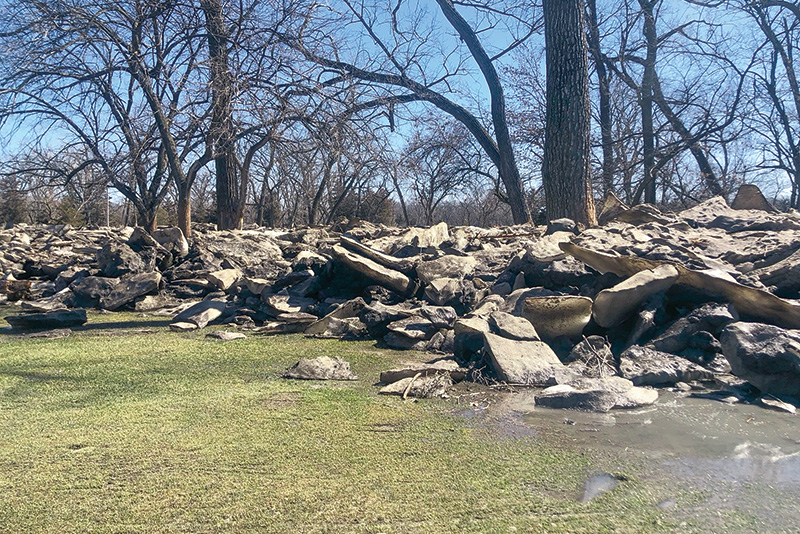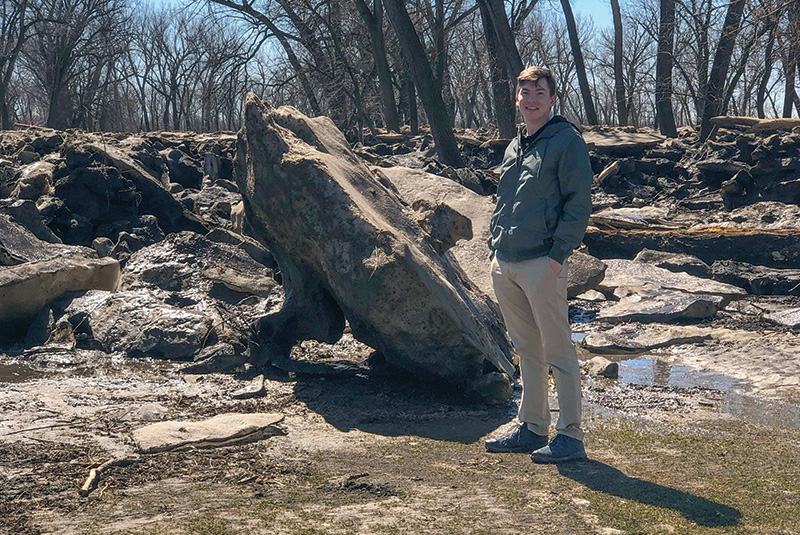Problem A: Sandy soil in bunker

Location: Jackson Township, N.J.
Turfgrass area: Bunker face
Turfgrass variety: Tall fescue
Problem B: Material on fairway

Location: Nebraska
Turfgrass area: Fairway
Turfgrass variety: Kentucky bluegrass
Scroll down for answers.

Problem A: Sandy soil in bunker
The sandy soil in this bunker was obviously caused by a burrowing animal, but what type of animal? This golf course has quite a bit of wild animal activity because it is close to two state forests. This hole was caused by an energetic fox that burrowed over 5 feet into the tall fescue bunker face to make a nice, cozy den. This course underwent a major bunker renovation in 2019, and when some of the bunker faces were renovated, sandy soil was incorporated into the areas. This sand is not typical on much of this course, even though it is located in New Jersey near the shore. The sandy areas quickly became an area of prime real estate for fox excavation. The superintendent has tried cayenne pepper and animal urine, which seems to work a bit, but the foxes return on a regular basis. It also does not help that the homeowners on the course love wildlife such as these beautiful foxes and encourage them to come around by feeding them.
Photograph submitted by Jennifer Torres, GCSAA Class A superintendent at Westlake Golf and Country Club in Jackson Township, N.J., 18-year association member and GCSAA grassroots ambassador.

Problem B: Material on fairway
The material on this fairway is ice — lots of ice. This course in Nebraska has a river that flows through the property, making it quite picturesque and a pleasure to play. A harsh winter in 2019 brought an unusual amount of ice to the river, and a sudden warm-up caused the ice to break apart quickly. When this happens, the ice can start flowing quickly downstream and can form an ice dam. This occurred just below where the river exited the golf course. The ice dam caused the ice to flow across nine holes, and, in some areas, the ice was 5 feet thick. The sliding ice gouged and damaged the turf on a portion of the course, as well as damaging many trees. The 18 holes had to be played as a nine-hole course while the crew repaired the course in many areas. These repairs included debris removal, reconstruction and flushing and repairing the irrigation system.
Photo submitted by Roch Gaussoin, Ph.D., retired from the Department of Agronomy at the University of Nebraska-Lincoln.
Editor’s note: Have a photo of an on-course anomaly? GCM would love to have a look! Email it to Photo Quiz author John Mascaro.
John Mascaro is the president of Turf-Tec International.